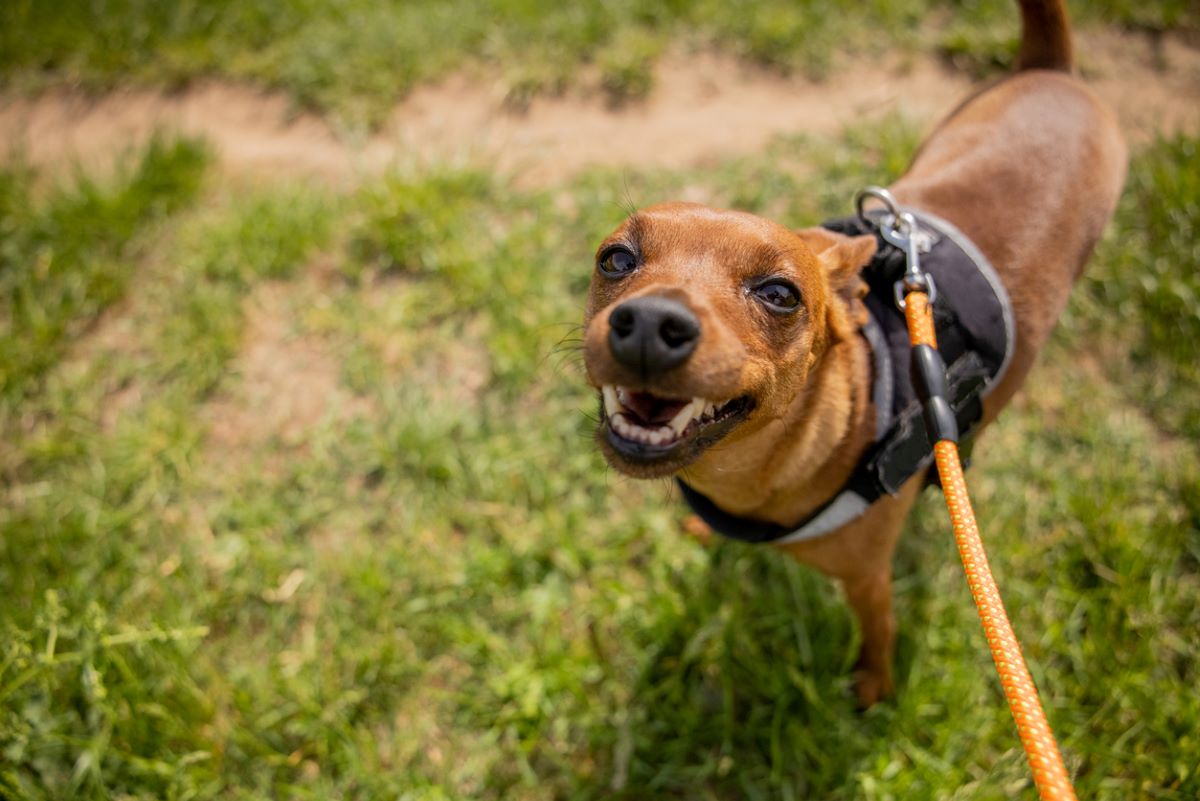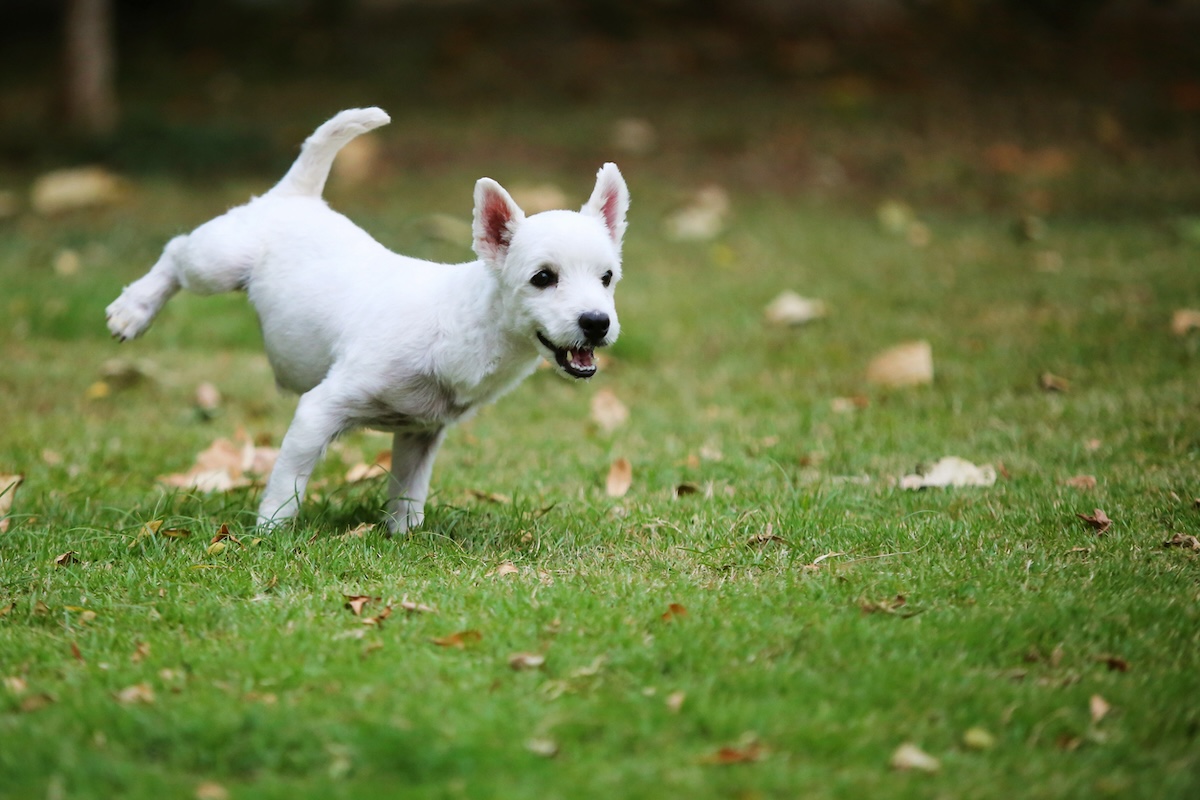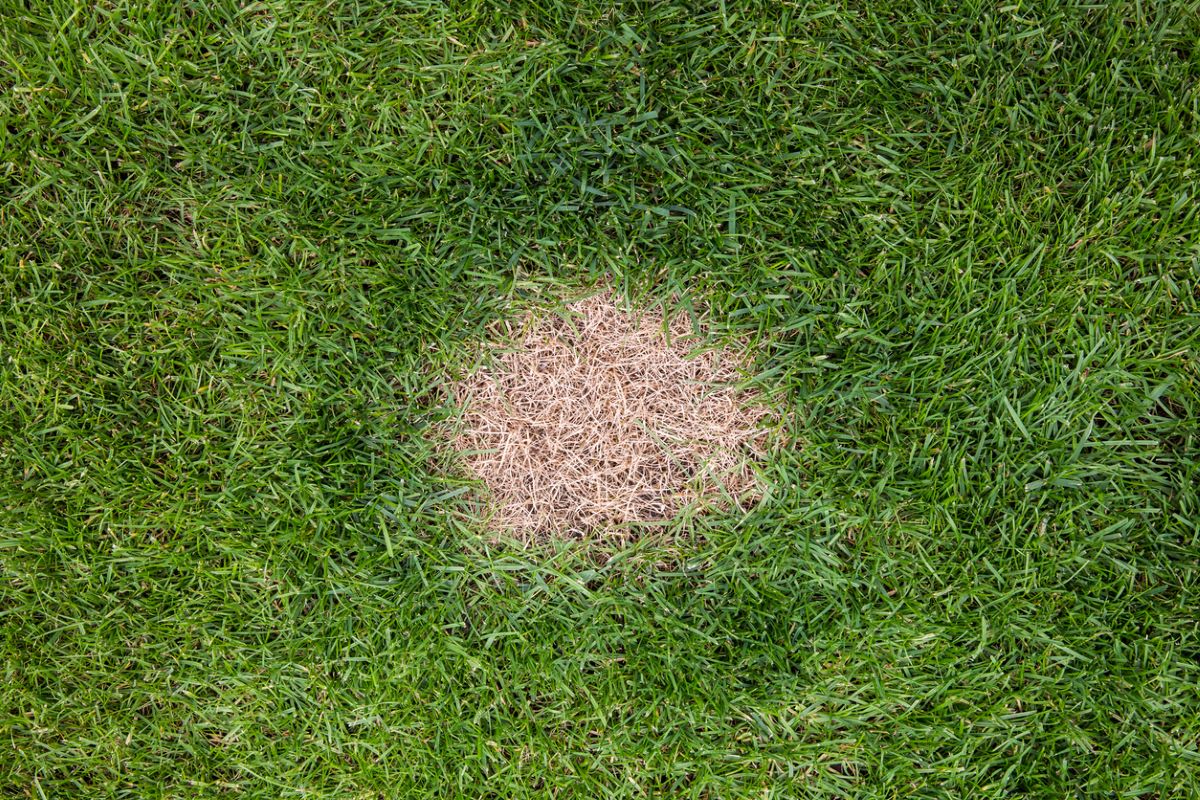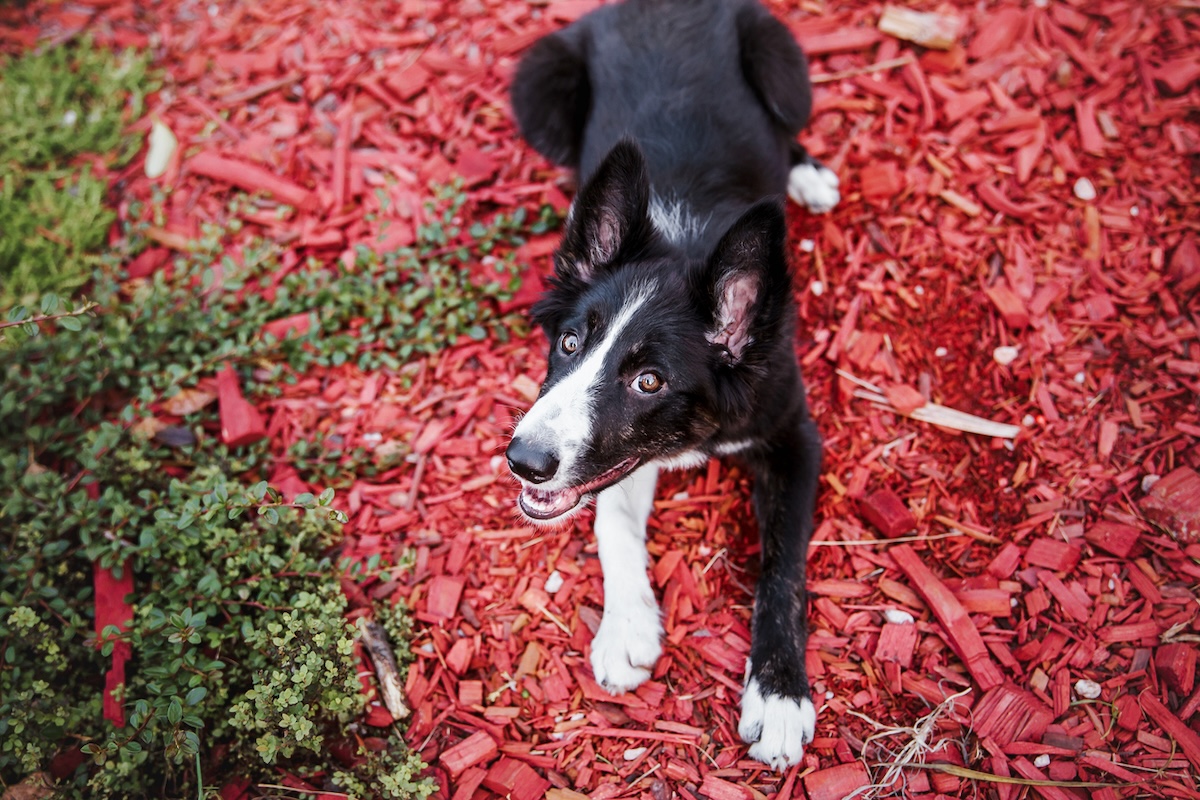

We may earn revenue from the products available on this page and participate in affiliate programs. Learn More ›
Q: My older dog doesn’t like going for walks anymore, so we just take him out to the front yard to take care of his business. He always urinates in the same spot next to the front walkway. The dog pee is killing grass in the spots where he eliminates. Can you explain how to repair grass from dog urine?
A: Dogs killing grass with pee can be a real problem for many homeowners. We work hard to keep our lawns watered, mowed, and fertilized, so it can be frustrating to see brown spots in the areas where our dogs relieve themselves.
Fortunately, this problem is avoidable, and dog pee doesn’t have to ruin your lawn. Get a Cornell veterinarian’s perspective on why dog urine kills grass, and what you can do to keep it from happening to your lawn again.

DIY Lawn Care. Simplified.
Don’t let dog pee kill your grass. Sunday can help. Take care of your lawnWhy does dog pee kill grass?

Before exploring how to stop dog urine killing grass or how to fix yellow grass caused by dog urine, let’s talk about why dog urine causes grass to turn brown. Dog urine contains urea, a nitrogen-rich waste product generated from the breakdown of proteins. Because dogs eat a high-protein diet, they have high levels of urea in their urine.
Nitrogen is a fertilizing nutrient for lawns and can help your lawn turn lush and green. However, the concentrated levels of nitrogen in dog urine can have the opposite effect when they are all deposited in one area of the lawn. “It is specifically the nitrogen in the urea that kills the grass,” says Karen J. Hirsch, DVM, professor of practice at Cornell University College of Veterinary Medicine. Just as too much fertilizer can cause fertilizer burn, when your dog pees in one spot over and over again, the nitrogen from its urine will burn the grass and cause it to turn brown.
While some may believe that female dog urine has a different chemical makeup that makes it more likely to kill grass, there isn’t any significant difference in dog urine by gender.
“[Grass damage] is more of an issue for owners of female dogs but is not related to any inherent difference in the nitrogen content of the urine between the sexes,” Hirsch says. “Rather, it has to do with how male and female dogs posture to urinate. Females squat to urinate and that results in a very concentrated area of nitrogen that ‘burns’ the grass. Whereas, males raise a leg and either urinate against a vertical object or outward so the urine ends up being sprayed over a larger area. The difference boils down to concentrated pool versus more widely distributed spray.” This is why brown spots are more likely to be a female dog’s doing. And anytime a dog pees in one area repeatedly, it can kill the grass.
So, if there’s no difference in the chemical makeup of urine from male or female dogs, are there differences in nitrogen content from breed to breed? “The breed has no bearing on the nitrogen concentration of the urine,” Hirsch says. “Smaller breeds will urinate less, so the areas of damage will be smaller, but that’s the only difference breed would make.”
Dog urine spots typically have a dark green ring.

It’s relatively easy to distinguish grass killed by dog urine from damage caused by lawn fungus, pests, or other sources. In most cases, dead grass from dog urine will look like a brown spot surrounded by a dark green ring. The brown spot is where the high levels of nitrogen in the pee killed the grass. Sometimes the spot may be yellow, an indication that the grass is not yet dead.
Remember that nitrogen is used in fertilizers. While the brown (or yellow) grass was hit with enough nitrogen to kill it, the dark green ring received just enough nitrogen to fertilize it, making that bit of grass greener.

DIY Lawn Care. Simplified.
Don’t let dog pee kill your grass. Sunday can help. Take care of your lawnTo fix green patches, start with a soil test.
If you have dog urine destroying grass around your home, you may notice green spots on the lawn instead of brown spots. This can indicate that the soil has very low levels of nitrogen. Rather than killing the grass by overfertilizing it, your dog’s urine is actually raising the nitrogen levels in the pee-soaked spots, making those patches lush and green.
If you think this may be the case for your lawn, begin with a soil test. Perform the test away from the area where your dog pees. If the soil test indicates that nitrogen levels are too low, apply a nitrogen-rich fertilizer to improve the health of your lawn and make it match the darker green spots caused by the dog pee.
Once the soil’s nitrogen levels are where they should be, be careful with where your dog pees. Any new urine spots could turn the grass brown from excess nitrogen.
Brown spots caused by dog pee will require reseeding.

Yellow spots from dog pee indicate the grass is not yet dead and might be able to regrow with watering. However, if a patch of your lawn is brown, the grass is dead, and that area will need to be reseeded.
To repair brown grass, start by raking the area and removing dead grass and other debris to reveal a clear patch of soil. Thoroughly soak the area with water. You want to rinse away as much of the nitrogen from your dog’s urine as possible.
After watering, wait for the water to become absorbed into the soil. The spot should be moist, but not so wet that water is pooling. Then, cultivate the soil using a trowel.
Next, spread a 2:1 mixture of garden topsoil and peat moss over the area, and mix it in with the loose soil. Sprinkle a generous amount of grass seed over the spot. Try using Bermuda grass, tall fescue, or zoysia grass, all of which are resistant to damage from dog urine.
Water the seeds daily and avoid walking over the area for several weeks. Keep your dog away from the seed and new grass as it grows.
How to Prevent Dog Pee From Killing Grass

Now that you know how to revive dead grass damaged by dog urine, consider the following tips to prevent dog urine from damaging your grass in the future.
- Designate a grass-free zone in the yard where your dog can take care of his or her business. Cover an area of your yard with mulch and train your dog to urinate only in that area. Discourage your dog from eating the mulch, as this can lead to GI discomfort, and choose a mulch made without cocoa bean hulls, which can be toxic to dogs.
- Some dog owners turn to vinegar as an effective solution for preventing their dogs from peeing in certain areas of the yard. But according to Hirsch, “Dogs may not like the taste of vinegar and maybe the smell, so perhaps wouldn’t choose that particular area to urinate on, but I wouldn’t depend on it to protect a lawn. An individual dog might like vinegar and eat the grass.”
- Keep your grass longer. Adjusting the setting on your lawn mower to keep your grass a little taller can help too. When the grass is longer, the effects of the higher nitrogen levels from urine will be less, and cause less severe stress and damage to the grass.
- Reseed the lawn with urine-resistant grass, or consider artificial grass. Reseeding your lawn with a urine-resistant grass, such as tall fescue, Bermuda grass, Kentucky bluegrass, zoysia grass, or perennial ryegrass, can help prevent future brown spots. Artificial grass is also dog-friendly; urine seeps down without damaging or staining the grass.
- Water freqently. While it may not be feasible to water every spot your dog creates when it pees, it’s probably a good idea to water the lawn regularly. Over time, this can help dilute the dog urine.

